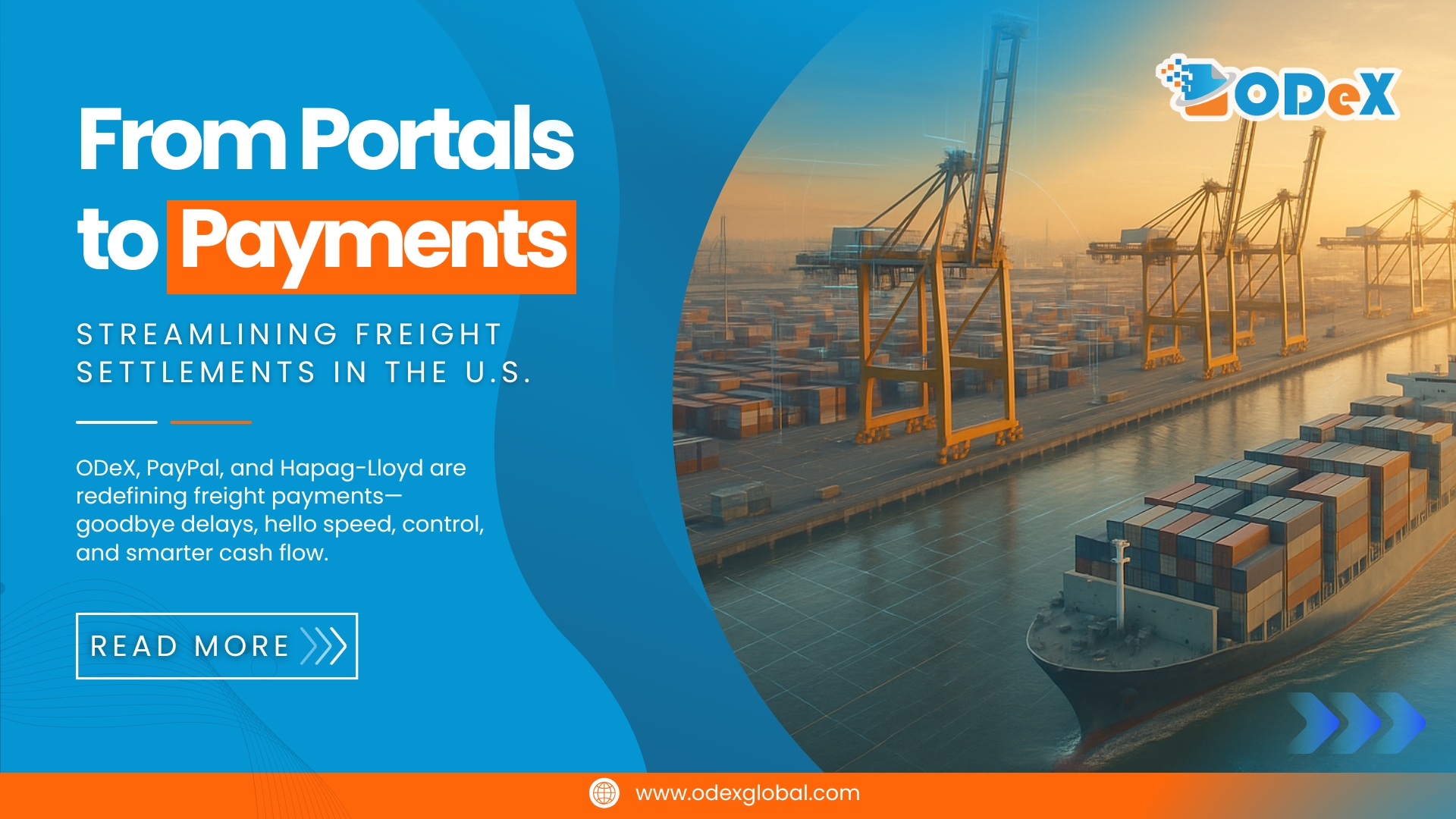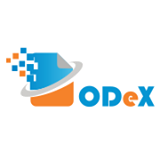From portals to payments - streamlining freight settlements in the U.S.
The digital revolution in shipping isn’t just about track-and-trace or eBLs—it is increasingly becoming about how money moves and its controls.
For many U.S.-based freight forwarders and trucking companies working with Hapag-Lloyd, the days of cheque payments, delays, and manual reconciliation are finally numbered.
Thanks to a forward-thinking collaboration between ODeX and PayPal, digital freight payments are not only faster—they’re smarter, more secure, and fully integrated.
What this triad—ODeX, PayPal, and Hapag-Lloyd—has done is simple in theory but transformative in practice: enable digital invoice presentment and payment settlement on one platform.
With freight invoices routed through ODeX and paid instantly via PayPal, the solution dramatically cuts turnaround times. Instead of waiting 3–5 days for funds to clear, vendors can now receive confirmations within minutes. That’s real liquidity.
But what sets this system apart is its intuitive interface and optionality. SMEs and owner-operators—who often lack the financial reserves of larger firms—can choose between PayPal’s direct pay options, PayLater financing, or even integrate with PayCargo and QuickPay.
That flexibility is game-changing. It means businesses can match cash flow with cargo flow, paying only when they collect. This alone reduces stress for small operators who are often stretched thin between receivables and payables.
ODeX’s innovation lies not just in providing a portal but in stitching together fragmented processes. In a traditional flow, documents and payments operate in silos.
An invoice might be emailed, a payment wired days later, and confirmation chased via follow-up calls. By collapsing these steps into a single digital interaction, the ODeX-PayPal solution eliminates inefficiencies.
Users log in, see pending invoices, choose a payment method, and complete the transaction—all in one ecosystem.
From a risk perspective, the transparency is critical. With audit trails built in, every payment is logged, linked to the freight invoice, and verifiable.
There’s less room for error, dispute, or fraud—something that manual systems simply can’t guarantee. It also provides a compliance-friendly environment where accounting, tax, and reporting are aligned with operational data.
For CFOs and finance controllers, this means better traceability and faster month-end closures.
Hapag-Lloyd’s participation is particularly significant. As one of the top global container carriers, their endorsement of digital payment systems signals a shift in industry expectations.
It’s no longer enough to offer a booking portal or eBL system. Carriers are being challenged to modernise every aspect of their interaction with customers, and payment is perhaps the most critical—and historically overlooked—component.
For Hapag-Lloyd, this isn't just about digitising for the sake of it. It’s about enabling their customers to operate leaner, faster, and with less friction.
For ODeX, it’s a proof point in their broader vision to become the digital payment backbone for freight.
And for PayPal, it’s another notch in their trade enablement belt—one that taps into a high-volume, recurring industry ripe for disruption.
The pilot rollout across the U.S. is just the beginning. Expect this collaboration to scale into new corridors, currencies, and perhaps even into port-related fee settlements and container deposit refunds. Because when digital payments become as fluid as freight itself, everyone wins.
What also makes this initiative timely is the broader context of supply chain volatility.
With geopolitical tensions, tariff issues, Red Sea rerouting, and inflationary pressures squeezing margins, freight operators need more control over their financial operations.
Being able to manage payments dynamically—whether delaying payment through PayLater or instantly confirming via wallet—gives businesses a buffer to navigate uncertainty.
Beyond payments, this model is a stepping stone toward digital trade ecosystems. Imagine a near future where freight documents, payments, insurance certificates, and customs clearances are all triggered automatically, based on smart contracts and shared data environments.
The PayPal-ODeX-Hapag-Lloyd partnership is not just solving today’s problems—it is paving the way for that interoperable, intelligent trade infrastructure we’ve been talking about for years.
The road ahead includes building APIs with ERPs, integrating with customs and port community systems, and allowing invoice-level financing through fintech partners.
These are not pipe dreams—they are natural extensions of what is now possible once a critical mass of carriers and shippers adopt unified digital payment solutions.
In summary, this initiative isn’t about technology alone. It’s about rethinking how value flows through the shipping ecosystem.
By modernising the financial layer of freight—often the most sluggish and manual—the PayPal-ODeX-Hapag-Lloyd collaboration marks a leap forward for global trade efficiency.
This is not just digitisation; this is enablement at scale.


















